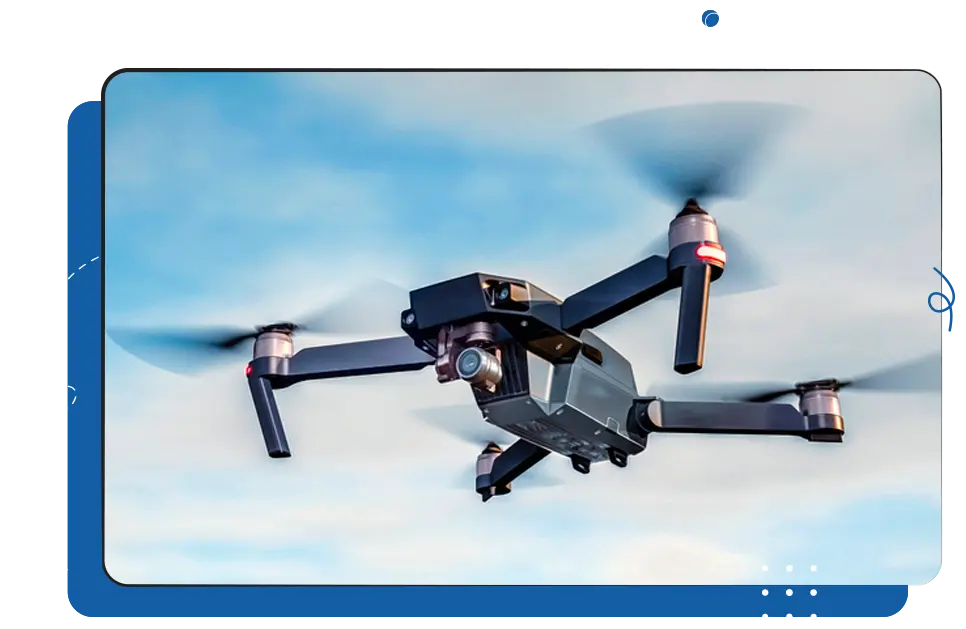CTE Curriculum
Prepare learners with CTE curriculum aligned to industry standards.
About the Course
The Drone Theory & Design course is designed to develop students’ ability to identify the various components of a drone. These components could include airframes, electric motors, propellers, flight controllers and batteries. Through learning about the FAA, students will understand drone regulations and safety considerations surrounding drone use.
SAMPLE LESSON
Propellers: Propeller Safety & Balancing
Each lesson includes media-rich presentations, a pre-made lesson plan, assessments and engaging real-world projects and activities. To get an idea of what iCEV offers, explore the sample lesson and resources below.
Lesson Resources:
Lessons Available in This Course
- Airframes - Airframe Characteristics & the History of Helicopter Design
- Airframes: Advancements & Multicopter Configurations
- Airframes: Airframe Sizes & Materials
- Airframes: Early Multirotor Aircraft Designs
- Batteries, Chargers & Connectors: Battery Health & Connectors
- Batteries, Chargers & Connectors: Battery Overview
- Batteries, Chargers & Connectors: Introduction & the History of Batteries
- Batteries, Chargers & Connectors: LiPo Batteries
- Cameras, Gimbals & Other Payloads: Exp Settings, Video Frame Rates & Saving Flies
- Cameras, Gimbals & Other Payloads: Gimbals & Lenses
- Cameras, Gimbals & Other Payloads: Payload Considerations & Camera Options
- Cameras, Gimbals & Other Payloads: Resolution, Sensors, Media & Quality Effects
- Design & Documentation: Documentation & Teamwork
- Design & Documentation: Engineering Design
- Design & Documentation: Tool Options
- Efficiency vs. Performance
- Efficiency vs. Performance: Build or Buy
- Efficiency vs. Performance: Efficiency in Various Drone Components
- Electric Motors: AC & DC Motors
- Electric Motors: Calculations of Motor Ratings
- Electric Motors: Choosing a Motor
- Electric Motors: Introduction & the History of Electric Motors
- Electronic Speed Controllers: Calibrating & Programming ESCs
- Electronic Speed Controllers: ESC Ratings
- Electronic Speed Controllers: Firmware Options & Mounting ESCs
- Electronic Speed Controllers: How ESCs Work
- Electronic Speed Controllers: Introduction to ESCs
- Flight Controllers: Autonomous Flight & Geo-Fencing
- Flight Controllers: Introduction & How Flight Controllers Work
- Flight Controllers: Sense-&-Avoid, the Flight Purpose & Flight Controller Categories
- Flight Controllers: Sensors & Guidance Systems
- Ground Control Stations & FPV: Data Tracking
- Ground Control Stations & FPV: FPV & Drone Racing
- Ground Control Stations & FPV: GCS Overview & Telemetry
- Ground Control Stations & FPV: Mission Planning & 3D Modeling/Mapping
- Introduction to Drones: Current Uses & Future Potential
- Introduction to Drones: Drone Components
- Introduction to Drones: Overview
- Propellers: Introduction, The History & Propeller Design Theory
- Propellers: Propeller Materials & Choosing Propellers
- Propellers: Propeller Safety & Balancing
- Propellers: Size, Pitch, Direction & Blades
- Propellers: Using eCalc
- Regulations & the FAA: Commercial Drone Use
- Regulations & the FAA: Federal, State & Local Control
- Regulations & the FAA: Recreational Drone Use
- Regulations & the FAA: Regulating Airspace
- Safety Considerations - Introduction to Safety
- Safety Considerations: Drone Knowledge
- Safety Considerations: Privacy Policies & Flight Procedures
- Transmitters & Receivers: Flight Modes, Receivers, Frequency Bands & Programming
- Transmitters & Receivers: Introduction & the History of Radio Control
- Transmitters & Receivers: Maneuvering, Controllers/Transmitters & Modes




